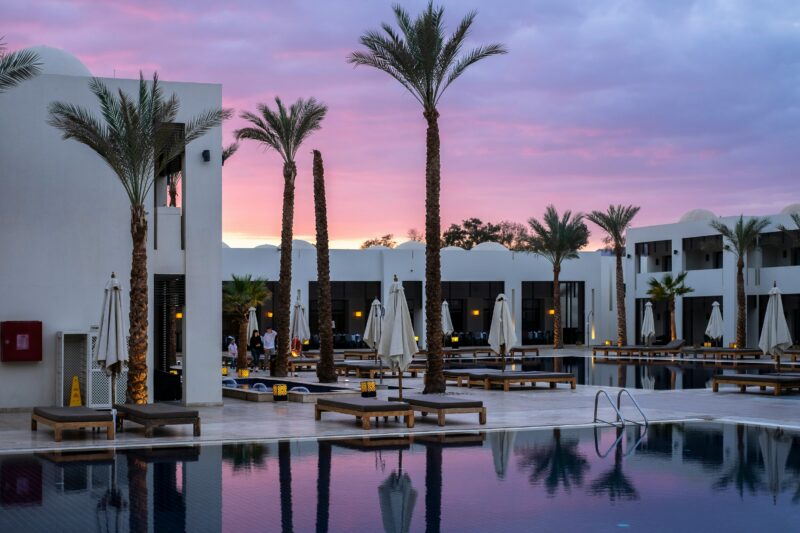
The global hotel sector experienced sustained momentum in June 2025, with marked contrasts between regions but a common trend: confidence in long-term hospitality investment. As in the previous month, the actions varied, as from large-scale openings to strategic renovations, the industry’s players are repositioning themselves on both mature and emerging markets.
North America: a robust pace of new openings
The United States continues to show vigorous development, particularly through numerous new hotel openings. The concentration of these projects across both coastal and inland states confirms the continued attractiveness of the US market for operators and investors alike. This dynamic underscores the region’s maturity and resilience, with hotel supply expanding in both urban and resort areas.
But while North America shows a high number of new hotel openings, it’s important to understand that most of these projects were launched years ago, often between 2020 and 2022. In the hotel industry, there is typically a 3 to 5-year lag between signing a deal and opening the doors. What we’re seeing in June 2025 is therefore the result of pre-COVID and early recovery optimism, when interest rates were still low and financing was more accessible.
And it needs to be highlighted that the political landscape may significantly impact tourism with Donald Trump’s return to the forefront of U.S. politics, new restrictions on visas, travel bans, or tightened foreign entry policies could undermine inbound tourism. Furthermore, that could also have a long – term impact, as the dynamics of the hospitality investment in this region, can be affect, not only during the presidency of Donald Trump, but even after.
Europe: between heritage repositioning and ambitious expansion
In Europe, June saw a strong surge in both openings and renovations, suggesting a market that is not only mature but actively being reinvented. The numerous strategic renovations and rebrandings, are signals of asset repositioning and value creation in historically strong destinations like France, Germany, Italy, and Spain. Simultaneously, a substantial number of new openings across Central and Southern Europe confirms that the continent remains highly attractive for both domestic and international brands. Europe currently appears as a dual-market: consolidated yet with high growth potential.
Asia and India: A two-speed expansion
India demonstrates a balanced strategy, with both openings and renovations suggesting urban growth in cities like Mumbai, Jaipur, and Bengaluru. In Southeast Asia and China, the maps show increased project signings and renovation activity, marking renewed interest in development pipelines, particularly in Thailand and Vietnam. These markets continue to offer medium-term growth opportunities for global groups.
But it needs to be noted that each of these location has also a specific caracteristic that might has affected the rhytm of hotel investment there. For example, Thailand remains a strategic destination for global operators. Despite fluctuations in Chinese arrivals, visa-free access for key markets and investor confidence in the country’s long-term tourism strength are keeping development on track. This can also be confirmed by the visa exemption that is imposed for certain countries upon arrival to Thailand. According to the Royal Thai Consulate – General, Los Angeles, the citizens from 93 countries and territories are entitled to visa exemption for the purpose of tourism business engagements or urgent work or ad-hoc work, for up to 60 days period of stay and can be extended for another period that doesn’t exceed 30 days.
Conerning Vietnam, the new international flight routes as well as the government-led push for marine and leisure tourism, have significantly contributed on the hotel expansion on this location.
Australia and Latin America: Selective investment
While less dense, Australia’s activity remains focused along the eastern seaboard, with a few renovation and opening projects in Sydney, Brisbane, and Melbourne. In Latin America, the signs of development remain more modest and dispersed, with new properties emerging in Peru, Brazil, and the Caribbean, but limited in volume compared to other continents. An important factor that might affect this situation is also the political and economic instability, thatdeters long-term investment and slows project execution. For example, in Argentina, ongoing inflation and currency devaluation make construction costs highly unpredictable, causing many international brands to pause or cancel projects. In Peru, frequent changes in government and periods of social unrest have delayed permits and infrastructure work, especially around major tourist areas.
Confident reinvestment and portfolio diversification
This month’s landscape confirms that renovation is not a sign of slowdown but rather of maturity, as established markets pursue repositioning strategies while still launching new projects. Europe is clearly the epicenter of current momentum, followed by the United States. The diversity of development strategies—from asset-light rebranding to heavy capex investments—shows that the industry is adapting to new guest expectations while maintaining a long-term investment outlook.









